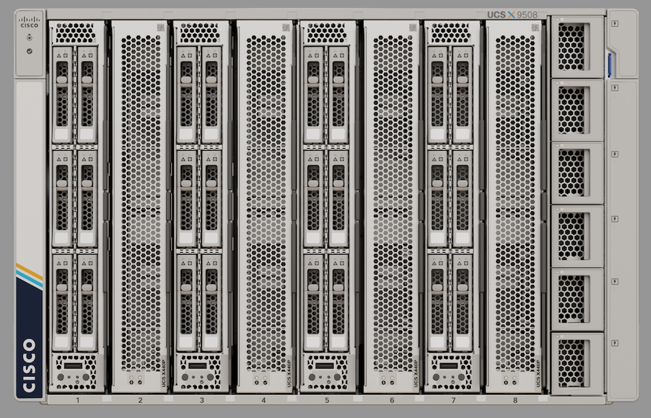- Select Prime members can get Kindle Unlimited for 3 months at no cost - here's how
- Modernization means putting developers in the driver’s seat
- Get a free iPhone 16 Pro for free from T-Mobile, no trade in required - here's how
- The LG C4 OLED for $800 off is one of the best Prime Day TV deals right now
- Prime members can save $10 on any $20 or more Grubhub+ order for a limited time - here's how
UCS X-Series – The Future of Computing – Part 1 of 3 – Cisco Blogs

Now that Cisco’s UCS X -Series launch is behind us, I wanted to discuss the tenets that shaped the product architecture of UCS X- Series. It has been more than decade since Cisco launched our UCS platform, a newcomer into the well-established enterprise server market. Rest is history. What has changed since then?
Shift towards Heterogenous Computing
The previous decade of computing was all about convergence. Protocol maturity of SAS & Fibre Channel made them the target to get converged on the ubiquitous Ethernet fabric. Data storage access times in milliseconds were the state of the art. CPU cores were the main execution element. As the decade progressed, storage protocols such as NVMeoF started replacing the traditional SAS/FC. With very little protocol overhead over native device latencies of SSD, data access transitioned from milliseconds to microseconds and lower.
While Moore’s law and optimized algorithmic programming is shortening the software execution times, placement of data is crucial to derive most benefit. Core explosion is happening, but feeds AKA interconnect is slow to evolve. All of this is putting stress on the general-purpose homogeneous computing model, where a CPU core is at the center of everything. Application programmers’ quest for running on the best possible hardware is leading @macro level, increasing use of hybrid cloud computing. On the other hand, @micro level, there is a paradigm shift happening from homogeneous computing to heterogeneous computing. Heterogeneous computing relies on Workload optimized compute islands such as AI/ML accelerators, accelerated computing, storage computing & memory pool with traditional CPU cores running part of application.
Architectural Challenge
This brings challenges on how to build a efficient architecture with such a divergent compute needs also being ready for requirements that are difficult to predict in advance? What fabric choices will address IO latencies from milliseconds to nano seconds? Should there be one fabric or multi fabric architecture? The “X” in the Cisco UCS X-Series has been designed to satisfy the present computing needs as well as evolving use cases & beyond.
Besides IO interconnects, class leading Vital statistics such as power, thermal performance & superior blade volume sets UCS X- Series apart from competition. Right sizing these aspects without sacrificing the compute density and future power scaling was a challenge that required iterative process. Formfactor is sticky during the lifetime of the chassis while the architecture must be agile to accommodate changing compute needs.
UCS X-Series is not just a hardware product launch. For instance, how does one provision & manage these divergent resources, while allowing for sufficient debuggability? Product success depends on abstracting away the underlying complexity to provide a simple interface for the end users. Cloud managed -Cisco Intersight management platform is the key element of this UCS X-Series architecture bringing in the much-required simplicity.
In the next post, we will delve into key trends that drove electromechanical aspects of UCS X- Series platform.
Share:

